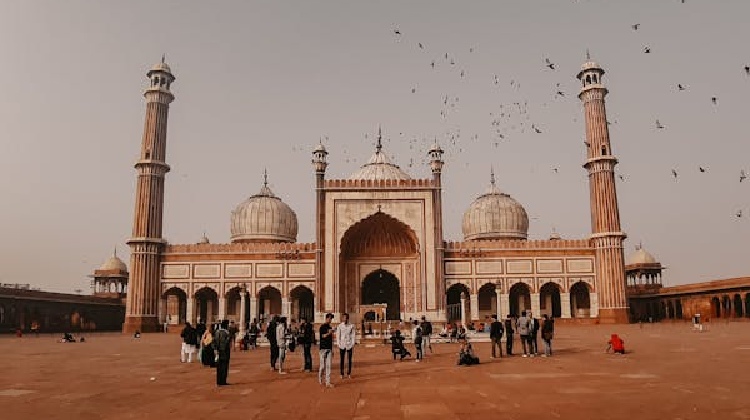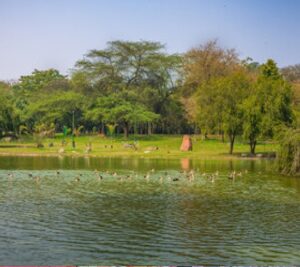Top 10 Historical Monuments In Delhi
Delhi is the capital city of India, is a treasure trove of history and heritage, boasting a rich tapestry of monuments and historical sites that Written tales of bygone eras. From grand Mughal architecture to colonial landmarks. Delhi’s top monuments and famous historical monuments offer a fascinating glimpse into the city’s illustrious past. In this guide, we delve into some of the most iconic historical places in Delhi. View Below for Historical Places in Delhi.

1. Qutub Minar
Standing tall as a symbol of Delhi’s rich history, the Qutub Minar is a UNESCO World Heritage Site. Built in the 12th century by Qutb-ud-din Aibak, the minaret soars to a height of 73 meters adorned with intricate carvings and verses from the Quran. The surrounding complex also houses ancient structures such as the Iron Pillar and the Quwwat-ul-Islam Mosque.
2. Red Fort
The Red Fort stands as a magnificent testament to Mughal grandeur. Built by Emperor Shah Jahan in the 17th century, this imposing fort complex is known for its red sandstone walls. The fort’s iconic Lahori Gate and Diwan-i-Aam are architectural marvels that showcase the opulence of Mughal architecture.
3. Humayun’s Tomb
Regarded as the precursor to the Taj Mahal, Humayun’s Tomb is a masterpiece of Mughal architecture and one of the most famous historical monuments in Delhi. Built-in the 16th century, this UNESCO World Heritage Site is the final resting place of Emperor Humayun. The tomb’s symmetrical layout lush gardens and Complex marble work exemplify the Attractive Appearance and grandeur of Mughal craftsmanship.
4. India Gate
A symbol of national pride and sacrifice, India Gate is an iconic war memorial that Respect the Indian soldiers who lost their lives in World War I. Designed by Sir Edwin Lutyens, this majestic structure stands at the heart of New Delhi and is surrounded by lush lawns and fountains. The names of the soldiers are inscribed on the walls of the monument.
5. Jama Masjid
As one of the largest mosques in India, Jama Masjid is a significant religious and architectural landmark in Delhi. Built by Emperor Shah Jahan in the 17th century, this grand mosque features red sandstone domes, marble minarets and a vast courtyard capable for thousands of worshippers. The mosque’s architectural splendor and historical significance make it a must-visit for tourists and pilgrims alike.
6. Lotus Temple
Known for its striking lotus-inspired architecture, the Lotus Temple is a Bahá’í House of Worship and a prominent landmark in Delhi. Designed by Iranian architect Fariborz Sahba, this serene temple welcomes people of all faiths to meditate, pray, or simply admire its unique design. Surrounded by lush green gardens and tranquil ponds, the Lotus Temple offers a peaceful retreat from the bustling city.
7. Purana Qila (Old Fort)
Purana Qila is one of the oldest forts in Delhi, dating back to the 16th century. Built by Emperor Sher Shah Suri, this massive fort complex boasts impressive ramparts, gateways and archaeological remnants. The fort’s picturesque location alongside the Yamuna River and its well-preserved structures make it a popular destination for history buffs and architecture enthusiasts.
8. Safdarjung’s Tomb
Safdarjung’s Tomb is a striking example of Mughal architecture and one of the top monuments in Delhi. Built-in the 18th century as a mausoleum for Safdarjung, the Prime Minister of the Mughal Empire, this monument features a grandiose central dome, intricate marble lattice work and beautiful landscaped gardens.
9. Jantar Mantar
Built by Maharaja Jai Singh II in the 18th century, Jantar Mantar is an astronomical observatory and a UNESCO World Heritage Site. This unique monument features a collection of astronomical instruments, including sundials, astrolabes, and giant astronomical instruments used to measure time, track celestial movements and predict eclipses. Jantar Mantar is not only a marvel of scientific ingenuity but also a testament to India’s rich scientific heritage.
10. Tughlaqabad Fort
With its massive ramparts and imposing architecture, Tughlaqabad Fort is a testament to the grand vision of Delhi’s medieval rulers. Built by Sultan Ghiyas-ud-din Tughlaq in the 14th century, this fortress once served as the capital of the Tughlaq dynasty. Today, the fort’s sprawling ruins, including its massive walls and bastions, offer a glimpse into Delhi’s medieval past and architectural heritage.
Conclusion
Delhi’s top monuments and famous historical monuments are not just architectural marvels but also repositories of the city’s rich history, culture, and heritage. From majestic Mughal structures to colonial landmarks, these historical places in Delhi offer a fascinating journey through time, captivating visitors with their grandeur and historical significance.




